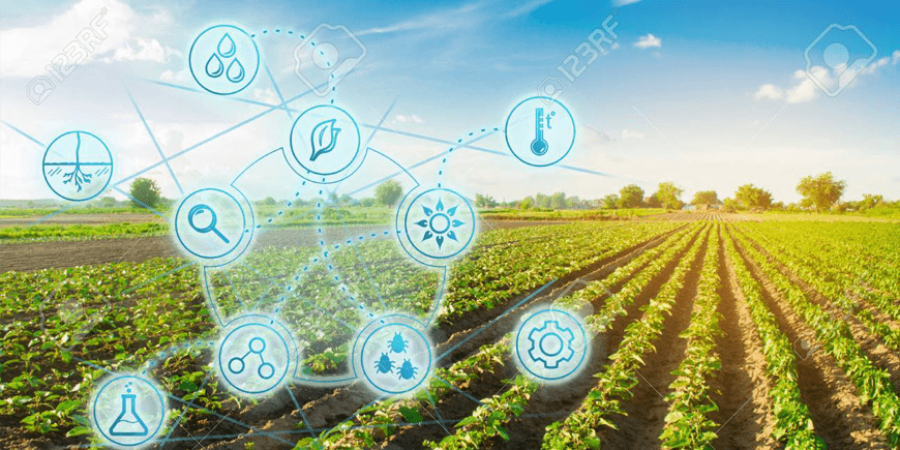

ICT in agriculture, commonly referred to as e-agriculture, is concerned with fostering the development of agriculture and rural areas through enhanced information and communication procedures. E-agricultural, in its more precise sense, refers to the conceptualization, design, development, assessment, and use of novel information and communication technologies (ICTs) in the rural domain, with a primary focus on agriculture.[1] ICT consists of hardware, software, networks, mobiles, services, and applications. These range from cutting-edge Internet-era technologies and sensors to other traditional aids like fixed telephones, satellites, televisions, radios, and radios. The development of institutional and individual capacities, support for policy, and the provision of standards, norms, techniques, and instruments are all essential elements of e-agriculture.
Because of technological breakthroughs such as sensors, gadgets, equipment, and information technology, modern farms and agricultural operations operate very differently from those just a few decades ago. Modern agriculture frequently makes use of cutting-edge technologies including robotics, temperature and moisture sensors, aerial photographs, and GPS. Businesses are now able to operate more profitably, efficiently, safely, and environmentally friendly thanks to these cutting-edge gadgets, robotic systems, and precision agriculture.
Farming technology's importance
Farmers are no longer required to spray insecticides, fertilizer, and water evenly across entire fields. Instead, they can utilize the bare minimum needed, focus on a small area, or even treat various plants differently. A few advantages are:
more productive crops
Using less water, fertilizer, and pesticides results in less expensive food.
reduced negative effects on natural ecosystems
less chemical sewage into rivers and groundwater
higher worker safety
Robotic technologies also make it possible to manage and monitor natural resources more effectively, such as the quality of the air and water. Additionally, it provides producers more control over the growth, handling, movement, and storage of plants and animals, which leads to:
Lower pricing and improved efficiency
safer food and safer growth environments
reduced ecological and environmental impact
Effects of NIFA
In order to promote agricultural technology and guarantee that it may be used by the country's agricultural businesses, NIFA supports:
physical sciences, engineering, and computer sciences fundamental research and development
development of farming equipment, sensors, and systems
Applied study that examines ways to use technologies affordably and with the least possible disturbance to current practices
Assistance with and instruction in modern technology use for farmers.
ICT's function as a system to assist farmers in making decisions must be acknowledged while discussing contemporary farming technologies. Farmers can stay current with all the most recent information thanks to ICT. This includes information on the weather, agriculture, and more contemporary and sophisticated techniques for improving crop quality and output.
ICTs have fundamentally changed how people, governments, and enterprises of all sizes conduct business today. Internet connectivity is available to about 60% of the world's population, and mobile internet is currently the most popular method of accessing the internet globally. Thanks to the widespread use of ICTs, it is now possible to improve communication and guarantee the delivery of services and information to those who previously couldn't.




